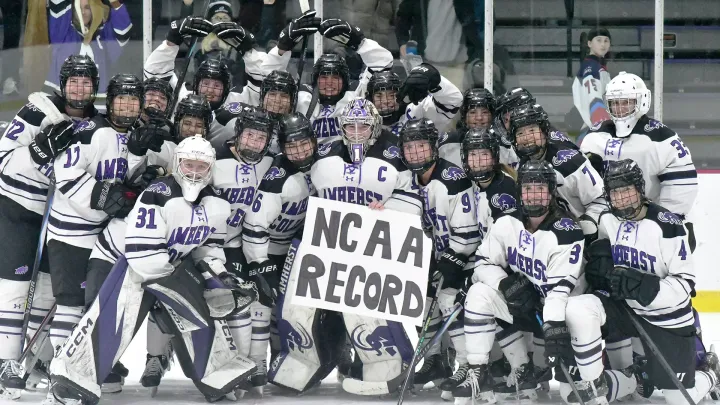A Statistical Perspective on the Volleyball Team's Future

Last year, the Firedogs went 22-5 overall and 8-2 in the NESCAC, where they lost in the finals of the tournament. This season, they return all but two players.
I want to know if the Mammoths can easily replace outside hitter Lauren Reppert ’19 and defensive specialist Hayes Honea ’19 this season. The way to do that is to calculate Wins Above Replacement (WAR). This is a metric which attempts to capture the overall worth of a given player in terms of wins the team would lose or gain if the player was replaced by an average player.
The first thing to consider when calculating WAR is the contribution of each player to the team. In volleyball, we can think of this as both offensive (hitting the ball over the net) and defensive (hitting the ball so it doesn’t hit the floor) metrics. Honea, who was responsible for the back line defense has an offensive contribution metric of 0.037. Reppert, an outside hitter, has .194. Honea has lower offensive requirements in her position, so this is to be expected. What the work of Alan Reifman, professor of statistics at Texas Tech and contributor at VolleyMetrics.com, has shown, however, is that the key indicator of team success is hitting percentage. That holds for the NESCAC as well.
A win in the NESCAC is roughly worth 0.05 hitting percentage. Our offensive metric is essentially a more nuanced version of hitting percentage, which includes serves and assists, so Honea’s offensive value of .037 can be converted into +0.74 wins. Reppert seems to be worth about +3.88 wins.
To extrapolate wins to wins above replacement, we have to find the cluster of players who could represent an average player who might replace Honea or Reppert. Of these players, their average offensive metric is 0.248. Statistically, then, an average defensive specialist is worth +4.96 wins, and therefore Honea could be easily replaced offensively. This might tell us that our metrics might need finer tuning or that volleyball doesn’t lend itself to Win Replacement.
However, Honea appears to be a very “defensive” defensive specialist who doesn’t serve often, but gets a lot of digs and assists. Perhaps a better server could lead to better offensive metrics and more success.
Reppert, on the other hand, tells us a different story. Her +3.88 win value exceeds the average win value of outside hitters under the same parameters by a whole win. Since outside hitters have a higher offensive volume, Repperts’ contributions make her more necessary to produce wins, rather than prevent losses like Honea. As hitting percentages are so crucial to wins, it seems that Honea should be easily replaced by a strong serving defensive specialist, like Skyleur Savage ’22. Savage had nearly as many service aces as Honea in half as many sets played. Reppert’s value, however, will be more difficult to pin down.




Comments ()